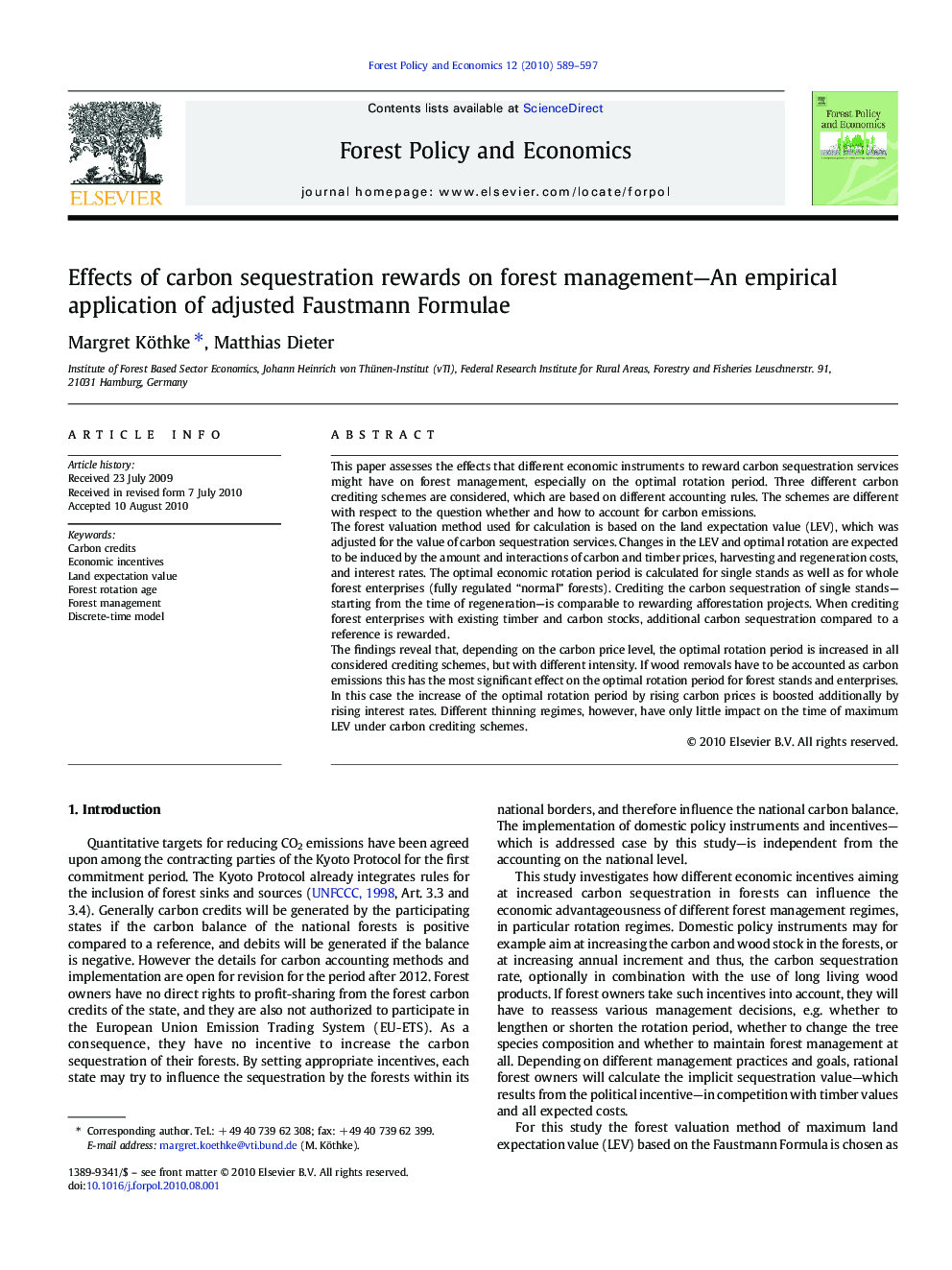| کد مقاله | کد نشریه | سال انتشار | مقاله انگلیسی | نسخه تمام متن |
|---|---|---|---|---|
| 91799 | 159847 | 2010 | 9 صفحه PDF | دانلود رایگان |

This paper assesses the effects that different economic instruments to reward carbon sequestration services might have on forest management, especially on the optimal rotation period. Three different carbon crediting schemes are considered, which are based on different accounting rules. The schemes are different with respect to the question whether and how to account for carbon emissions.The forest valuation method used for calculation is based on the land expectation value (LEV), which was adjusted for the value of carbon sequestration services. Changes in the LEV and optimal rotation are expected to be induced by the amount and interactions of carbon and timber prices, harvesting and regeneration costs, and interest rates. The optimal economic rotation period is calculated for single stands as well as for whole forest enterprises (fully regulated “normal” forests). Crediting the carbon sequestration of single stands—starting from the time of regeneration—is comparable to rewarding afforestation projects. When crediting forest enterprises with existing timber and carbon stocks, additional carbon sequestration compared to a reference is rewarded.The findings reveal that, depending on the carbon price level, the optimal rotation period is increased in all considered crediting schemes, but with different intensity. If wood removals have to be accounted as carbon emissions this has the most significant effect on the optimal rotation period for forest stands and enterprises. In this case the increase of the optimal rotation period by rising carbon prices is boosted additionally by rising interest rates. Different thinning regimes, however, have only little impact on the time of maximum LEV under carbon crediting schemes.
Research highlights
► The optimal economic rotation period is increased by carbon sequestration rewards.
► Existing forests react more sensitive to additional carbon rewarding than afforestations.
► Debiting wood removal increases the optimal economic rotation severely.
Journal: Forest Policy and Economics - Volume 12, Issue 8, October 2010, Pages 589–597